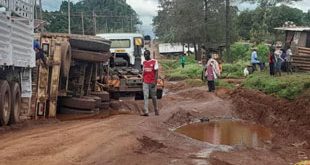
Push for regional logistics hub status is `selfish’ says Museveni
Uganda is grappling with a logistical nightmare of importing tonnes of machinery for its nascent oil industry but, in a classic move of seizing opportunity in a crisis, operators are seeking to turn the country into an East African regional logistics hub.
Discussion of the logistics challenge and possible solutions took centre-stage during a recent three-day “Joint Oil and Gas Convention and Regional Logistics Expo” held in Kampala for oil sector investors and logistics operators.
Up to 12 million tonnes of equipment and materials need to be imported and delivered to the Lake Albert region in western Uganda where most oil production activity is taking place.
Trouble is that Uganda is not known to have the best railway, water, and air transport facilities. The easiest option appears to be transport by road. But this also poses challenges as the imported materials need to be transported over distances exceeding 1500km from the Indian Ocean coastal ports of Mombasa in Kenya and Dar es Salam and Tanga in Tanzania to the Lake Albert region.
According to estimates by oil companies, up to 350 truckloads of materials need to be moved by road every day through Kenya on the northern road corridor and Tanzania on the southern corridor to deliver the equipment.
But, data from the Regional Lorry Drivers and Transporters Association shows that there are only about 20 trucking companies in Uganda with about 450 individual members (truck owners and crew).
At stake is a huge expected investment of anything between US$8billion and US$20 billion over the next three to five years. This is a huge chunk of money to be pumped into an economy whose current annual budget is about US$7.5 billion. Experts say close to 60% of this money is to be spent on logistics or procurement and transportation of materials.
The issue has become complicated because Ugandan operators want to be handed some of this money by handling some of the logistics under what is now popularly called “local content”. The Uganda Chamber of Mines and Petroleum (UCMP) and the Petroleum Authority of Uganda (PAU) are leading the fight for a slice of the cake going to locals. So far very few indigenous companies might benefit given the value of investments required and timelines involved according to the UCMP Chairman, EllyKaruhanga, and the PAU Executive Director, Ernest Rubondo.
The push for local content comes as joint venture (JV) partners in Uganda’s oil production sector—Total E&P Uganda, Tullow Oil Uganda and CNOOC Uganda Ltd— are frantically working to ensure that they hit the government’s target of producing first oil by the end of 2020.
Designs of what needs to be built, technically called Front End Engineering Design (FEED), are nearing completion; including designs and compilations of required for central processing facilities, feeder pipelines, and the crude export pipelines. But the sector faces huge logistical challenges even as the three companies are expected to make their Final Investment Decision (FID) soon.
Uganda’s case is complicated because of its location in the interior without a coastline. A recent World Bank study titled: “Trading on Time” that established that 25% of trade costs is infrastructure related while 75% is due to administrative hurdles and bureaucratic procedures at borders, also noted that these are magnified for land-locked countries, like Uganda, whose goods have to cross several borders.
Not surprisingly, the investors are making plans based on the logistics infrastructure available, mainly road.They have, for example, designed a “logistics envelop” based on the most feasible freight dimensions (length of 25m, width of 5m and height of 4.7m and weight of at least 120 tonnes). These are measurements suitable for freight by large goods vehicles on single lane roads.
 The Independent Uganda: You get the Truth we Pay the Price
The Independent Uganda: You get the Truth we Pay the Price


